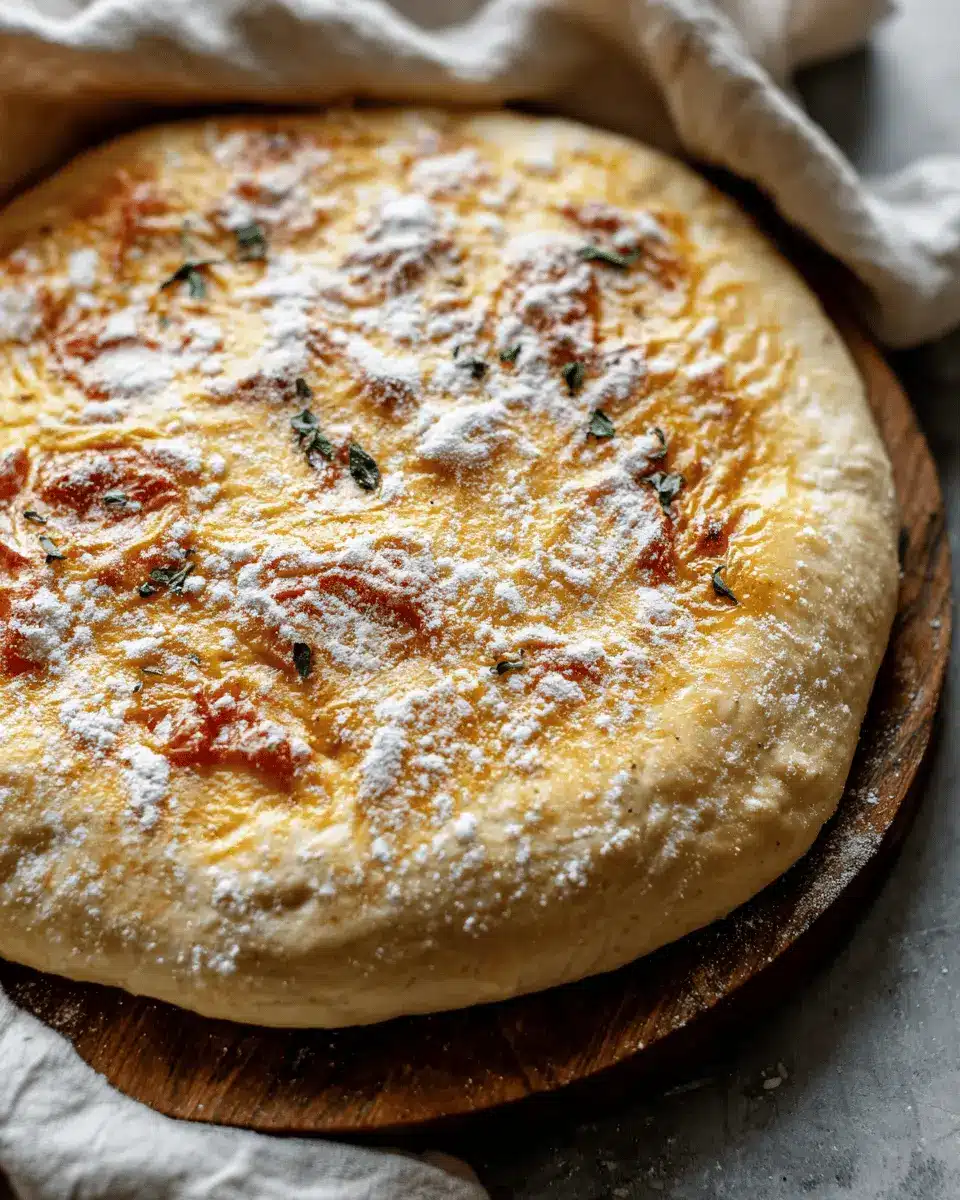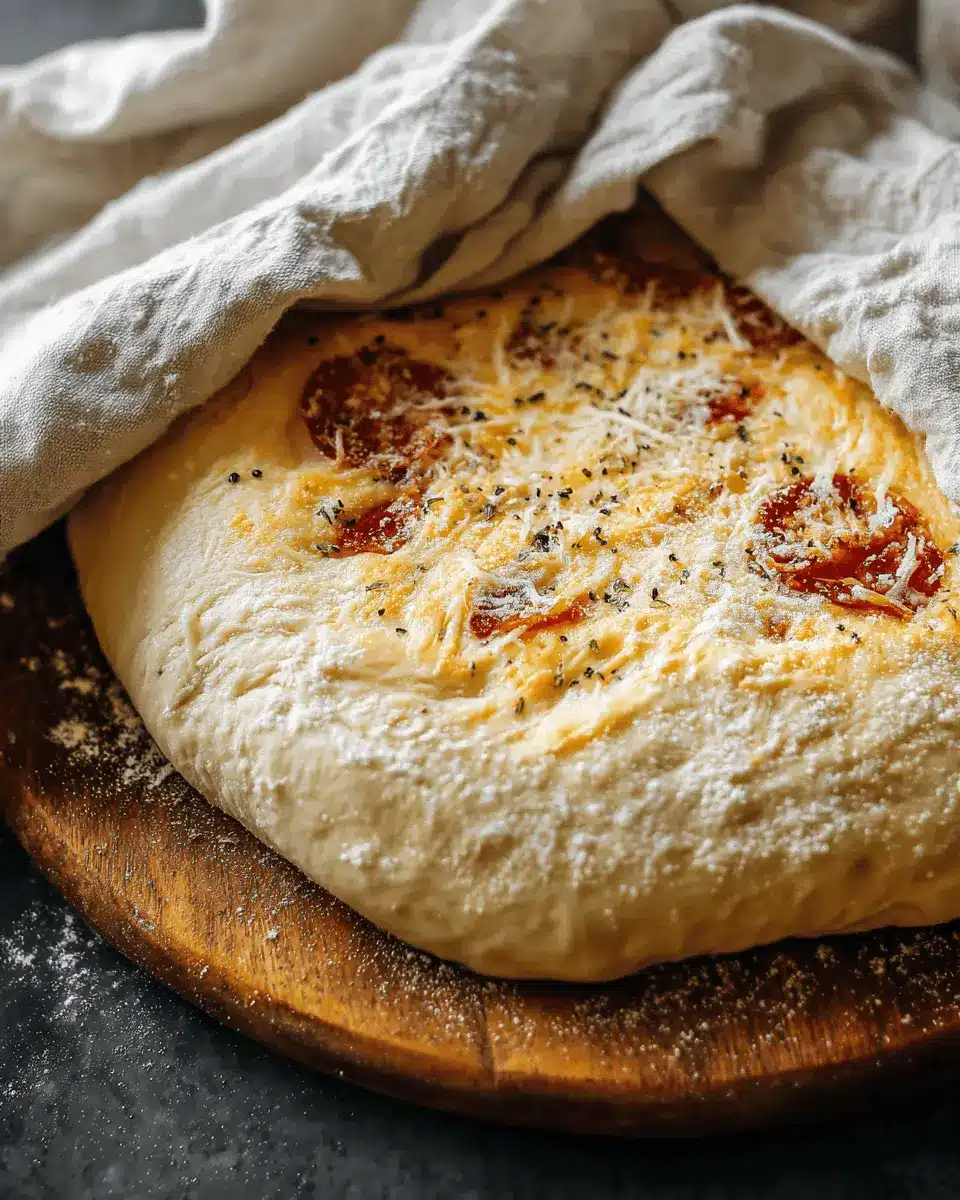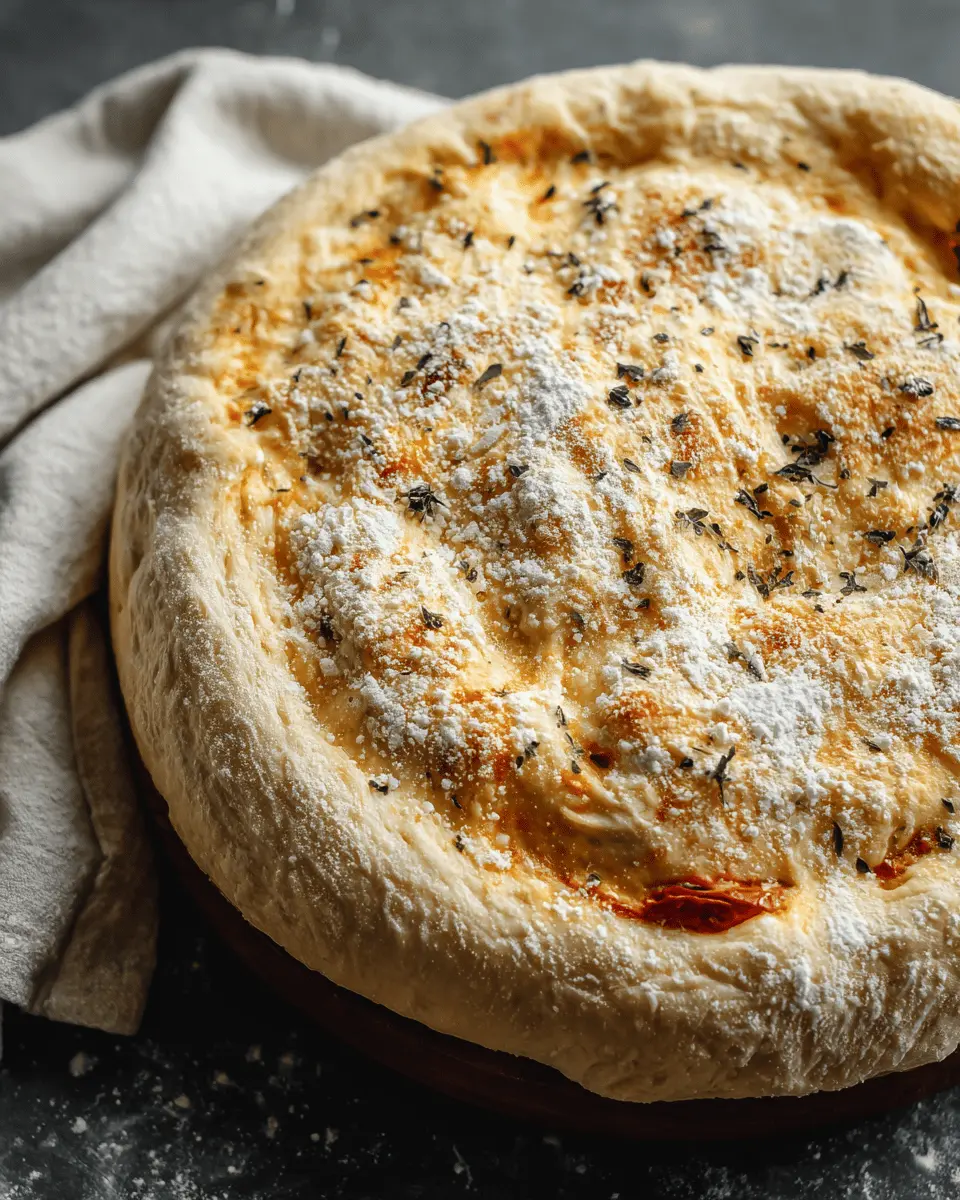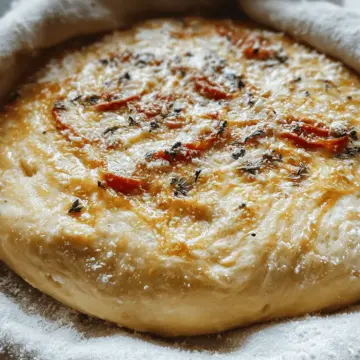Introduction to Homemade Pizza Dough
Making your own homemade pizza dough is not just a fun kitchen project; it's also a gateway to delicious, customizable pizzas that suit your taste preferences perfectly. Have you ever wondered why restaurant pizzas taste so amazing? The secret often lies in the dough. By creating your own, you control the ingredients, ensuring only the best flavors make it into your final dish.
Why opt for homemade? Well, there's something quite gratifying about kneading your own dough, knowing that you've crafted it from scratch. Plus, many store-bought options are packed with preservatives, whereas homemade dough is pure and fresh. According to food expert and chef, Alton Brown, the taste and texture of freshly made dough is simply unmatched.
Not only do you get to enjoy the satisfaction of pizza-making, but you also get to experiment with flavors. For example, adding herbs like oregano or spices like garlic powder can elevate your dough and make it uniquely yours. Ready to become a pizza aficionado? Your journey begins here with this simple and rewarding homemade pizza dough recipe! For more inspiration on dough techniques, check out Serious Eats.

Ingredients for Homemade Pizza Dough
Making homemade pizza dough is not just about following a recipe; it’s about creating something delicious from scratch that brings everyone together. Here’s what you’ll need to whip up a fantastic batch of pizza dough for four people:
- 2 cups all-purpose flour: This forms the base of your dough. Make sure to keep some extra on hand for dusting during the kneading process.
- 1 teaspoon active dry yeast: This is your leavener, helping the dough rise and giving it that delightful airy texture.
- ¾ cup warm water: The warmth (around 110°F) activates the yeast, so getting this temperature right is crucial.
- 1 teaspoon salt: Essential for flavor and balancing the dough.
- 1 tablespoon olive oil: This adds richness and helps create a soft dough.
- 1 teaspoon sugar: This nourishes the yeast and contributes to browning during baking.
- 1 teaspoon dried oregano: A lovely herb that adds a touch of Italian flavor.
- ½ teaspoon garlic powder: For that extra kick of taste.
With these simple ingredients, you’re on your way to a memorable pizza night! If you’re curious about yeast activation or different flour types, you can learn more from The Kitchn.
Preparing Homemade Pizza Dough
Making your own homemade pizza dough is not just a fun kitchen activity; it’s a way to truly customize your pizza experience. Let’s dive into the process step by step!
Activate the yeast
To start, we need to awaken our yeast, the magical ingredient that will give our dough its rise. In a small bowl, mix 1 teaspoon of active dry yeast with 1 teaspoon of sugar and ¾ cup of warm water (about 110°F), which you can easily measure with a food thermometer. Stir gently and let it sit for about 5-10 minutes. Once it becomes frothy, you'll know it’s alive and ready to work its magic in your homemade pizza dough.
Mix the dry ingredients
While the yeast is getting cozy, let’s bring together our dry ingredients. Grab a large mixing bowl and combine 2 cups of all-purpose flour, 1 teaspoon of salt, 1 teaspoon of dried oregano, and ½ teaspoon of garlic powder. Whisk these ingredients together until fully blended. This is where the flavor begins to develop, so don’t rush it! For extra tips on choosing the best flour, check out this simple guide.
Combine wet and dry ingredients
Now that our yeast is active and our dry mix is ready, it’s time to combine them! Pour the frothy yeast mixture into the dry blend along with 1 tablespoon of olive oil. Use a wooden spoon or spatula to gently mix everything until the dough starts to come together. You want all those lovely dry ingredients to be moistened. It should look pretty messy at this stage, but that’s just part of the fun!
Knead the dough to perfection
Transfer your dough onto a lightly floured surface. Kneading is the crucial next step; it’s when your dough develops that gorgeous, elastic texture. Knead for about 5-7 minutes, folding and pressing until it’s smooth and elastic. If your dough feels too sticky, sprinkle just a little more flour to help along the way.
Let the dough rise
Once you're satisfied with your kneading, place the dough in a lightly greased bowl. Cover it with a damp cloth or plastic wrap and let it rise in a warm spot for about 1-1.5 hours or until it doubles in size. This is your dough’s time to shine! You can go do a quick workout or catch up on a show for a bit while you wait.
Shape and prepare for baking
After it rises, gently punch the dough down to release the air bubbles—that's where the flavor lives! Turn it out onto a floured surface and shape it into a ball, or divide it into portions if you’re feeling adventurous and want to try different toppings. Now you're ready to stretch or roll out your dough, top it off with your favorite ingredients, and toss it in the oven. Just like that, you're on your way to enjoying a delicious homemade pizza night!
Ready to create your perfect pizza masterpiece? Enjoy the dough-making journey!

Variations on Homemade Pizza Dough
Whole Wheat Pizza Dough
For a heartier twist on traditional homemade pizza dough, try using whole wheat flour. This variation not only adds a nutty flavor but also boosts the fiber content, making it a more nutritious option. Substitute half (or all) of the all-purpose flour with whole wheat flour in your recipe. You might need a bit more water since whole wheat flour tends to absorb moisture differently. Don't forget to let it rise as usual—your taste buds will thank you!
Gluten-Free Pizza Dough
Embracing a gluten-free lifestyle? No worries! You can still enjoy delicious homemade pizza dough. Look for a gluten-free flour blend that includes xanthan gum, which helps mimic the elasticity of traditional dough. Mix your gluten-free flour with water, yeast, olive oil, and seasonings. Note that the kneading time may be shorter, and it's essential to let it rise to achieve a great texture. For a helpful guide, check out resources like The Gluten-Free Goddess. Enjoy experimenting with different toppings to complement your gluten-free crust!
Cooking Tips for Homemade Pizza Dough
Making homemade pizza dough can be a fun and rewarding experience! Here are some tips to help you achieve the perfect crust:
-
Measure Flour Accurately: Use a kitchen scale if possible. This ensures the right dough consistency. Too much flour can lead to a dry crust.
-
Don’t Rush the Rise: Allowing your dough to rise fully is crucial. It develops flavor and texture, so aim for that double in size!
-
Use Warm Water: The temperature of the water (around 110°F) is key to activating the yeast. Too hot can kill it; too cold won't activate it.
-
Experiment with Flour Types: Try adding bread flour for extra chewiness or whole wheat flour for a nutty flavor.
For more expert tips, check out Serious Eats' Guide to Pizza Dough. Happy cooking!

Serving Suggestions for Homemade Pizza Dough
Once you’ve prepared your homemade pizza dough, you’ll want to explore a world of delicious toppings and flavors. Here are some suggestions to create a pizza masterpiece:
- Classic Margherita: Top your dough with fresh mozzarella, juicy tomatoes, and fragrant basil for a simple yet delightful flavor combination.
- Veggie Delight: Load up on colorful bell peppers, onions, mushrooms, and spinach for a hearty vegetarian option.
- Meat Lover’s Dream: Combine turkey bacon, chicken ham, and beef for a protein-packed feast.
- Herbed Olive Oil Base: Brush the dough with olive oil and sprinkle fresh herbs like rosemary and thyme before adding your toppings for an aromatic boost.
For more ideas, check out this guide to pizza toppings to inspire your next creation!
Time Breakdown for Homemade Pizza Dough
Preparation Time
Getting started with your homemade pizza dough is a breeze! The preparation itself requires approximately 15-20 minutes. This includes mixing the ingredients and kneading the dough to the perfect consistency.
Rising Time
Now comes the most exciting part: letting the dough rise! You'll need to give it about 1-1.5 hours to double in size. This is crucial, as it helps achieve that delightful texture we all love in pizza crust.
Total Time
Overall, from start to finish, expect to invest around 1.5 to 2 hours in your homemade pizza dough. This time includes preparation and rising but doesn’t encompass baking, so plan accordingly. Do you have your favorite toppings ready?
For more tips on the best practices for rising dough, check out resources like King Arthur Baking for expert advice.
Nutritional Facts for Homemade Pizza Dough
Calories
One serving of homemade pizza dough typically contains around 100-150 calories, depending on the portion size and specific ingredients used. This makes it a relatively light base for your favorite toppings when compared to store-bought alternatives.
Carbohydrates
The primary ingredient in this homemade pizza dough, all-purpose flour, contributes to a carbohydrate count of approximately 20-25 grams per serving. Carbs are crucial for energy, especially if you're planning an active evening!
Protein
Each serving offers about 3-4 grams of protein, mainly from the flour. While not a substantial source, pairing your pizza with protein-rich toppings like chicken ham or turkey bacon can enhance the nutritional profile significantly and keep you satisfied longer.
For detailed nutritional breakdowns, nutrition calculators like the USDA’s FoodData Central can provide more comprehensive insights tailored to your specific ingredients.
Feeling excited to personalize your pizza? Remember, the beauty of making your dough is the endless topping possibilities!
FAQs about Homemade Pizza Dough
Can I use instant yeast instead of active dry yeast?
Absolutely! You can substitute instant yeast for active dry yeast in your homemade pizza dough recipe without any issues. Instant yeast is more potent and doesn't require the proofing step—just mix it directly into your dry ingredients. It’s a convenient option if you're in a hurry.
How long can I store pizza dough in the fridge?
Your homemade pizza dough can be stored in the fridge for about 3-5 days. Make sure to wrap it tightly in plastic wrap or place it in an airtight container to prevent it from drying out. If you notice a slight sour smell, it’s still good! That’s just the natural fermentation process at work.
Can I freeze leftover pizza dough?
Yes, freezing your leftover pizza dough is a great way to preserve it! Just wrap it tightly in plastic wrap and then place it in a freezer bag. Thaw it in the fridge overnight before using, and you’ll have fresh dough ready for your next pizza night! For more details on dough storage, check out The Kitchn's guide on pizza dough storage options.
Conclusion on Homemade Pizza Dough
Crafting your own homemade pizza dough is a truly rewarding experience that transforms any pizza night. With simple ingredients and straightforward steps, you'll have a fresh base ready for your favorite toppings. Embrace the process, get creative, and enjoy the incredible flavors of homemade goodness! For further inspiration, check out this guide on perfecting pizza toppings.

Homemade Pizza Dough: The Easy Way to Create Delicious Pizzas
Equipment
- Mixing bowls
- wooden spoon
- Floured Surface
Ingredients
Dough Ingredients
- 2 cups all-purpose flour plus extra for dusting
- 1 teaspoon active dry yeast
- ¾ cup warm water around 110°F
- 1 teaspoon salt
- 1 tablespoon olive oil
- 1 teaspoon sugar
- 1 teaspoon dried oregano
- ½ teaspoon garlic powder
Instructions
Dough Preparation Steps
- Combine the yeast and sugar: In a small bowl, mix yeast with sugar and warm water. Stir and let sit for 5-10 minutes until frothy.
- Mix the dry ingredients: Combine flour, salt, oregano, and garlic powder in a large mixing bowl. Whisk together.
- Add the wet ingredients: Pour the yeast mixture and olive oil into dry ingredients. Mix until dough comes together.
- Knead the dough: Transfer to a floured surface and knead for 5-7 minutes until smooth and elastic.
- Let the dough rise: Place in a greased bowl, cover, and let rise in a warm place for 1-1.5 hours until doubled.
- Punch down the dough: After rising, punch down, shape into a ball or divide for smaller pizzas.





Leave a Reply